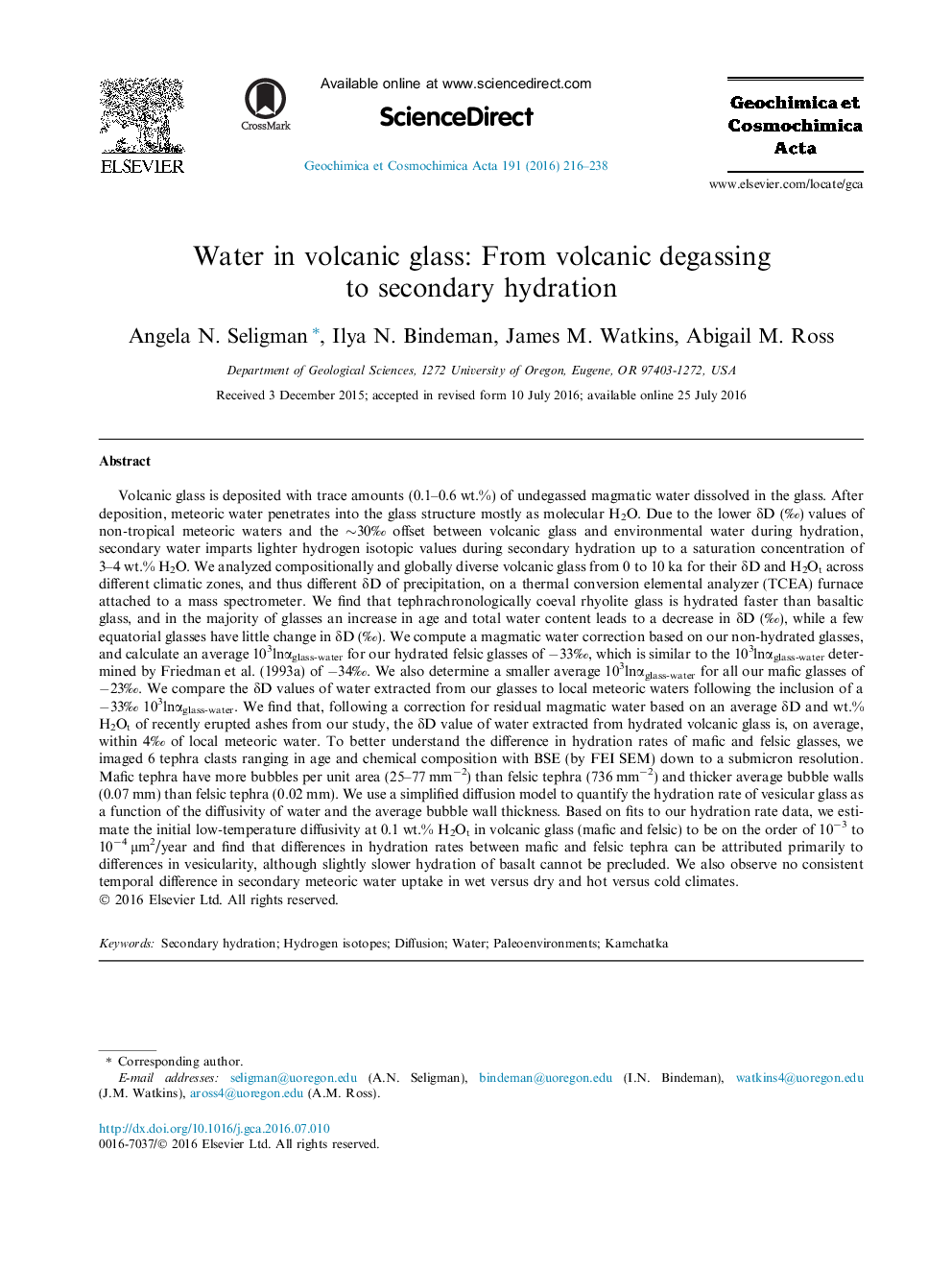| کد مقاله | کد نشریه | سال انتشار | مقاله انگلیسی | نسخه تمام متن |
|---|---|---|---|---|
| 6437197 | 1637966 | 2016 | 23 صفحه PDF | دانلود رایگان |
Volcanic glass is deposited with trace amounts (0.1-0.6 wt.%) of undegassed magmatic water dissolved in the glass. After deposition, meteoric water penetrates into the glass structure mostly as molecular H2O. Due to the lower δD (â°) values of non-tropical meteoric waters and the â¼30â° offset between volcanic glass and environmental water during hydration, secondary water imparts lighter hydrogen isotopic values during secondary hydration up to a saturation concentration of 3-4 wt.% H2O. We analyzed compositionally and globally diverse volcanic glass from 0 to 10 ka for their δD and H2Ot across different climatic zones, and thus different δD of precipitation, on a thermal conversion elemental analyzer (TCEA) furnace attached to a mass spectrometer. We find that tephrachronologically coeval rhyolite glass is hydrated faster than basaltic glass, and in the majority of glasses an increase in age and total water content leads to a decrease in δD (â°), while a few equatorial glasses have little change in δD (â°). We compute a magmatic water correction based on our non-hydrated glasses, and calculate an average 103lnαglass-water for our hydrated felsic glasses of â33â°, which is similar to the 103lnαglass-water determined by Friedman et al. (1993a) of â34â°. We also determine a smaller average 103lnαglass-water for all our mafic glasses of â23â°. We compare the δD values of water extracted from our glasses to local meteoric waters following the inclusion of a â33â° 103lnαglass-water. We find that, following a correction for residual magmatic water based on an average δD and wt.% H2Ot of recently erupted ashes from our study, the δD value of water extracted from hydrated volcanic glass is, on average, within 4â° of local meteoric water. To better understand the difference in hydration rates of mafic and felsic glasses, we imaged 6 tephra clasts ranging in age and chemical composition with BSE (by FEI SEM) down to a submicron resolution. Mafic tephra have more bubbles per unit area (25-77 mmâ2) than felsic tephra (736 mmâ2) and thicker average bubble walls (0.07 mm) than felsic tephra (0.02 mm). We use a simplified diffusion model to quantify the hydration rate of vesicular glass as a function of the diffusivity of water and the average bubble wall thickness. Based on fits to our hydration rate data, we estimate the initial low-temperature diffusivity at 0.1 wt.% H2Ot in volcanic glass (mafic and felsic) to be on the order of 10â3 to 10â4 μm2/year and find that differences in hydration rates between mafic and felsic tephra can be attributed primarily to differences in vesicularity, although slightly slower hydration of basalt cannot be precluded. We also observe no consistent temporal difference in secondary meteoric water uptake in wet versus dry and hot versus cold climates.
Journal: Geochimica et Cosmochimica Acta - Volume 191, 15 October 2016, Pages 216-238
